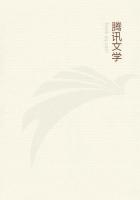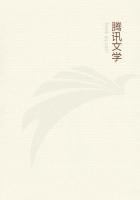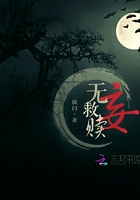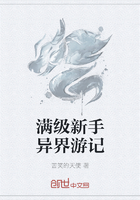Yonville-l'Abbaye (so called from an old Capuchin abbey of which not even the ruins remain) is a market-town twenty-four miles from Rouen, between the Abbeville and Beauvais roads, at the foot of a valley watered by the Rieule, a little river that runs into the Andelle after turning three water-mills near its mouth, where there are a few trout that the lads amuse themselves by fishing for on Sundays.
We leave the highroad at La Boissiere and keep straight on to the top of the Leux hill, whence the valley is seen. The river that runs through it makes of it, as it were, two regions with distinct physiognomies--all on the left is pasture land, all of the right arable. The meadow stretches under a bulge of low hills to join at the back with the pasture land of the Bray country, while on the eastern side, the plain, gently rising, broadens out, showing as far as eye can follow its blond cornfields. The water, flowing by the grass, divides with a white line the colour of the roads and of the plains, and the country is like a great unfolded mantle with a green velvet cape bordered with a fringe of silver.
Before us, on the verge of the horizon, lie the oaks of the forest of Argueil, with the steeps of the Saint-Jean hills scarred from top to bottom with red irregular lines; they are rain tracks, and these brick-tones standing out in narrow streaks against the grey colour of the mountain are due to the quantity of iron springs that flow beyond in the neighboring country.
Here we are on the confines of Normandy, Picardy, and the Ile-de-France, a bastard land whose language is without accent and its landscape is without character. It is there that they make the worst Neufchatel cheeses of all the arrondissement; and, on the other hand, farming is costly because so much manure is needed to enrich this friable soil full of sand and flints.
Up to 1835 there was no practicable road for getting to Yonville, but about this time a cross-road was made which joins that of Abbeville to that of Amiens, and is occasionally used by the Rouen wagoners on their way to Flanders. Yonville-l'Abbaye has remained stationary in spite of its "new outlet." Instead of improving the soil, they persist in keeping up the pasture lands, however depreciated they may be in value, and the lazy borough, growing away from the plain, has naturally spread riverwards. It is seem from afar sprawling along the banks like a cowherd taking a siesta by the water-side.
At the foot of the hill beyond the bridge begins a roadway, planted with young aspens, that leads in a straight line to the first houses in the place. These, fenced in by hedges, are in the middle of courtyards full of straggling buildings, wine-presses, cart-sheds and distilleries scattered under thick trees, with ladders, poles, or scythes hung on to the branches. The thatched roofs, like fur caps drawn over eyes, reach down over about a third of the low windows, whose coarse convex glasses have knots in the middle like the bottoms of bottles. Against the plaster wall diagonally crossed by black joists, a meagre pear-tree sometimes leans and the ground-floors have at their door a small swing-gate to keep out the chicks that come pilfering crumbs of bread steeped in cider on the threshold. But the courtyards grow narrower, the houses closer together, and the fences disappear; a bundle of ferns swings under a window from the end of a broomstick; there is a blacksmith's forge and then a wheelwright's, with two or three new carts outside that partly block the way. Then across an open space appears a white house beyond a grass mound ornamented by a Cupid, his finger on his lips; two brass vases are at each end of a flight of steps; scutcheons* blaze upon the door. It is the notary's house, and the finest in the place.
*The panonceaux that have to be hung over the doors of notaries.
The Church is on the other side of the street, twenty paces farther down, at the entrance of the square. The little cemetery that surrounds it, closed in by a wall breast high, is so full of graves that the old stones, level with the ground, form a continuous pavement, on which the grass of itself has marked out regular green squares. The church was rebuilt during the last years of the reign of Charles X. The wooden roof is beginning to rot from the top, and here and there has black hollows in its blue colour. Over the door, where the organ should be, is a loft for the men, with a spiral staircase that reverberates under their wooden shoes.
The daylight coming through the plain glass windows falls obliquely upon the pews ranged along the walls, which are adorned here and there with a straw mat bearing beneath it the words in large letters, "Mr. So-and-so's pew." Farther on, at a spot where the building narrows, the confessional forms a pendant to a statuette of the Virgin, clothed in a satin robe, coifed with a tulle veil sprinkled with silver stars, and with red cheeks, like an idol of the Sandwich Islands; and, finally, a copy of the "Holy Family, presented by the Minister of the Interior," overlooking the high altar, between four candlesticks, closes in the perspective. The choir stalls, of deal wood, have been left unpainted.
The market, that is to say, a tiled roof supported by some twenty posts, occupies of itself about half the public square of Yonville. The town hall, constructed "from the designs of a Paris architect," is a sort of Greek temple that forms the corner next to the chemist's shop. On the ground-floor are three Ionic columns and on the first floor a semicircular gallery, while the dome that crowns it is occupied by a Gallic cock, resting one foot upon the "Charte" and holding in the other the scales of Justice.



